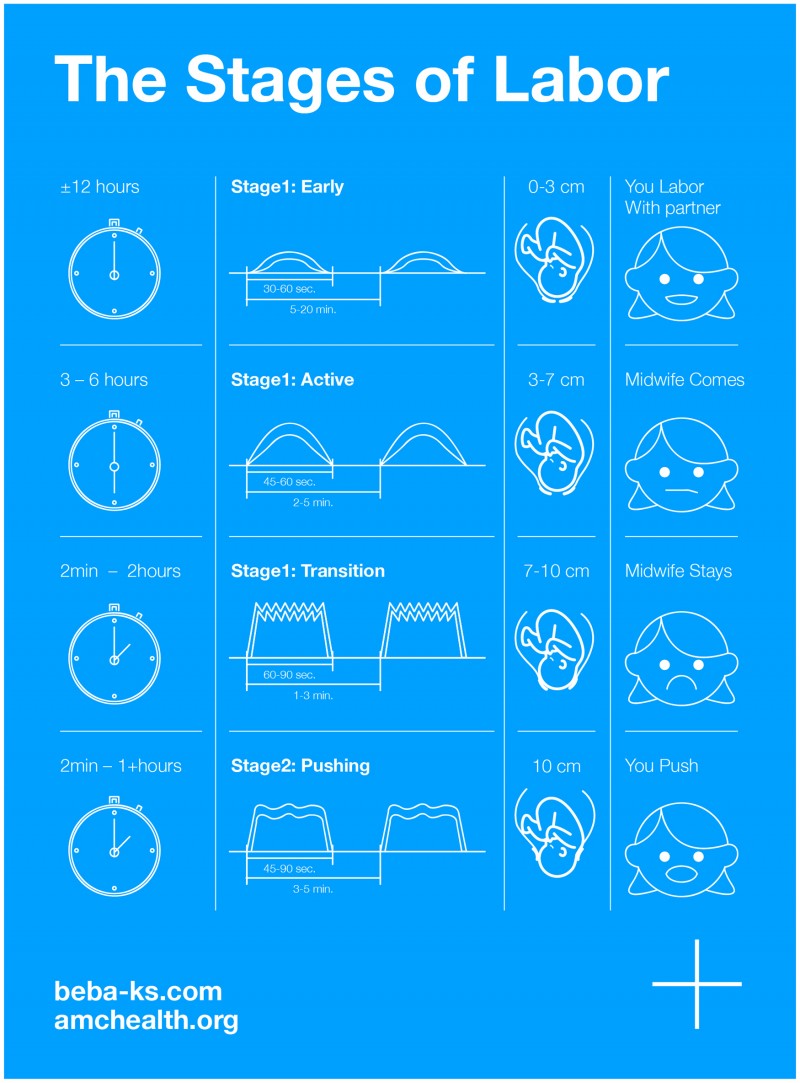It depends on each individual situation: pregnancy complications/high risk, first baby, distance from hospital, and personal preference all affect when you should arrive at the hospital. You do not need to go to the hospital at the first sign of contractions, and in fact it is better to stay at home in early labor as your wife will be much more comfortable. What’s a contraction? It is the periodic tightening of the uterine muscle that serves to push the baby out.
Help time your wife’s contractions and go when they are regularly at five minutes apart unless you live a long distance from the hospital, in which case you should leave sooner. In any case, it’s always best to call your wife’s doctor to check when you should go to the hospital. Other reasons (danger signs) you should go to the hospital immediately is if:
You can help determine if your wife is in real labor or false labor. False labor, also called Braxton Hicks contractions, is a painless tightening in the lower abdomen. Women can start feeling these Braxton Hicks contractions in their second or third trimester of pregnancy, but they typically get stronger in the last month of pregnancy. They do not mean your wife is going into labor; it is just her body’s way of getting prepared. There are a few signs that differentiate true labor from false labor:
|
Real Labor |
False Labor |
|
Contractions are regular and come at increasingly shorter intervals and become longer and more intense. |
Timing of the contractions are irregular and do not become more frequent or more intense. |
|
Breaking of waters that result in a trickle or a gush of fluid. Contractions may start before or after. |
Contractions stop during rest, when mother stops what she is doing, walking, or changing position. |
|
Passing the mucus plug. Labor could still be a few days away, but it is coming. |
Contractions are inconsistent in strength (strong one minute then weak the next). |
|
Persistent pain in the lower back, especially if accompanied by a cramping, premenstrual feeling. |
Location of pain is in the front only. |
Labor isn’t like what you see on TV. Women aren’t necessarily in pain and scream, sometimes her waters don’t break until baby comes out and almost always the baby doesn’t pop out shortly after labor starts. For most women, especially first-time mothers, active labor takes about 6-8 hours, but can go up to 18 hours or more. Every woman's experience is different. It might help you to understand the distinct stages of labor and how long each typically takes:
Stage 1 – consists of three phases:
Stage 2 – involves pushing and the birth of your baby. The average time for first-time mothers is one hour.
Stage 3 – is delivery of the placenta, usually within 5-30 minutes after baby is born.

The more relaxed your wife is in labor, the easiest it will be for her. Distract her with a movie, help her practice relaxation techniques, give her a gentle massage, or encourage her to take a shower or bath.
When timing contractions, start counting from the beginning of one contraction to the beginning of the next. You can use our contraction timer to keep track or simply write it down on a piece of paper. Do not worry about obsessively timing contractions during the “Early Phase” of labor, just check periodically to see whether they are getting closer together.
By timing contractions, you will know when to go to hospital. If it’s too early, keep her distracted with a movie or a walk, or if labor starts at night you could help her try to get back to sleep. Remember our advice above on what is real and false labor.
If your wife has had a C-section, she will not be able to hold her baby skin-to-skin after birth. But maybe you can! Practicing skin-to-skin is very important for baby as it:
How to do Skin-to-Skin:
We offer free classes across Kosovo at our Mom's Class Centers (Women’s Health Resource Centers).
Find your local class here.
Free classes